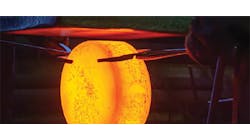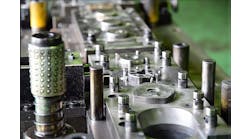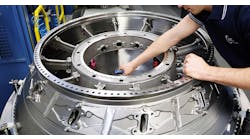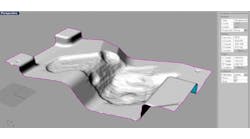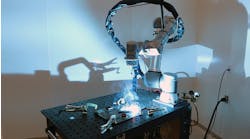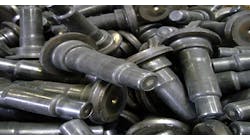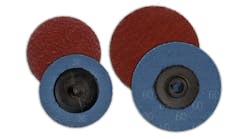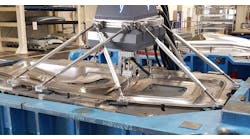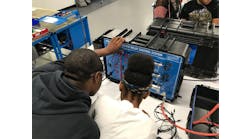A: I received the photos you sent by e-mail. I am looking at a male plug in a circular die with two ejection pin holes. The opposing die is a deep impression that produces a forged piston shape that is somewhat cup-shaped. I am assuming that the plug (or brown area) is where the dies are washing out or experiencing heat checking and eventually failing by being exposed to cycles of heat from exposure to the hot metal.
By the way, you did not mention the alloy being forged. I am assuming steel. Some pistons are forged from aluminum and what I say below does not apply to aluminum forging. That would be another discussion.
The raised plug is exposed to the hot metal during forging. I assume that the pinholes are for ejectors. The speed of the ejection can be a critical factor in minimizing the die heat up. The combination of lube/water spray on the plug will also help keep the heat build-up from softening the die (plug).
You might try to take a video of the ejection cycle to learn if the ejectors are engaged as the ram retracts. If they are delayed in any way, the plug (or raised boss) will experience significant heat build-up.
There are ways of speeding up the ejector including hydraulic/accumulator systems with a nitrogen boost to literally kick out the forging as the ram retracts. This is often the best choice for getting maximum die life in such areas exposed to the hot metal.
Having said that, another approach would involve inserting plugs made of more heat-resistant alloys ranging from high-tungsten steels to nickel/cobalt grades of heat-resistant alloys.
Again, I mention some of these approaches in my most recent article May/June 2005 issue of Forging.
For more than 40 years H. James Henning held key technical positions in the forging industry, including as director of technology for the Forging Industry Association, and as president of Henning Education Services, a Columbus, OH, firm specializing in customized education and training in forging technologies.
Guidelines and recommendations offered in this column are based on information believed to be reliable and are supplied in good faith but without guarantee. Operational conditions that exist in individual plants and facilities vary widely. Users of this information should adapt it, and always exercise independent discretion in establishing plant or facility operating practice.
